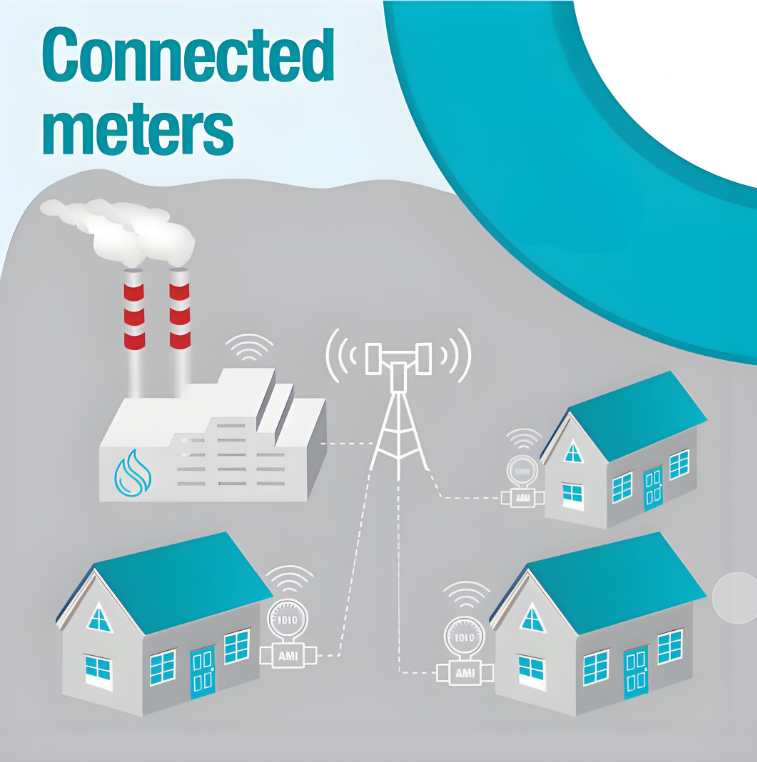PCBs have important applications in several key areas of the power IoT, which are described in detail in the following three areas: smart meters, power inspection drones and substation automation:

Smart Meters
Chip and Sensor Support
PCB provides stable physical support and electrical connection for high-precision metering chips, microcontrollers, and communication modules. Ensure accurate signal transmission and processing, and guarantee the accurate collection of electricity data.
Optimized circuit layout effectively isolates interference and ensures the accuracy of current and voltage sampling. Lay the foundation for the reliability of power consumption data.
Low power consumption design
Optimize the power management circuit, adopt low-power electronic components and reasonable sleep-wake mechanism. Reduce the energy consumption of the smart meter, extend the battery life, and meet the real-time data acquisition and transmission requirements.
Communication Function Guarantee
The communication of the smart meter relies on the communication module on the PCB, whether it is wired (e.g. Ethernet, RS485, etc.) or wireless (e.g. GPRS, NB-IoT, etc.). It can ensure stable transmission of communication signals and realize data interaction with the power management system. It supports remote meter reading, tariff adjustment, fault diagnosis, and other functions.
Power Inspection UAV
Key support of flight control system
PCB carries a flight control chip, gyroscope, accelerometer, GPS module, etc., and processes sensor data quickly. Accurately calculates and adjusts the flying attitude, speed, and position of the UAV in real-time. Ensure stable flight in complex power inspection environment and accurate approach to power equipment inspection.
The core role of the image transmission system
Responsible for the image sensor, video processing chip, and wireless transmission module work together. The collected images and video data of power equipment are encoded and compressed, and then wirelessly transmitted back to the ground station. Provide inspectors with clear real-time images to help timely detection of equipment defects and faults.
Battery Management System
Based on PCB, it realizes monitoring and control of battery voltage, current, temperature, and other parameters. Reasonable management of battery charging and discharging, preventing overcharging, over-discharging and overheating, and extending battery life. Ensure the endurance of the UAV and improve the inspection efficiency.
Substation automation
Protection, measurement, and control device core
PCB integrates high-performance processors and complex logic circuits to quickly and accurately collect substation electrical data. The preset protection algorithm determines the type and location of the fault and issues a timely trip command to remove the faulty equipment. Ensure the safe and stable operation of the power system.
Equipped with measurement, control, and communication functions, it interacts with other equipment in the station and the superior dispatching system through the PCB communication interface to realize intelligent monitoring and management of the substation.
Key Role of Intelligent Terminal
PCB realizes intelligent control and condition monitoring of disposable equipment (e.g. circuit breakers, disconnect switches, etc.). Connecting protection, measurement, and control devices with disposable equipment, and accurately transmitting control commands. Real-time collection and feedback of equipment location and status information to realize remote operation and status visualization.
Basic support for communication equipment
PCB provides support for communication chips, optical modules, and network interfaces. It builds a stable and reliable communication network, ensures smooth information flow between automation equipment in the substation and with the external power grid, and builds a solid communication foundation for automation operation.
PCB plays a significant role in various key areas of electric power Internet of Things. With the development of technology. Its performance, reliability, and degree of intelligence will continue to improve, and continue to help the construction of the Internet of Things and the development of the power industry.
